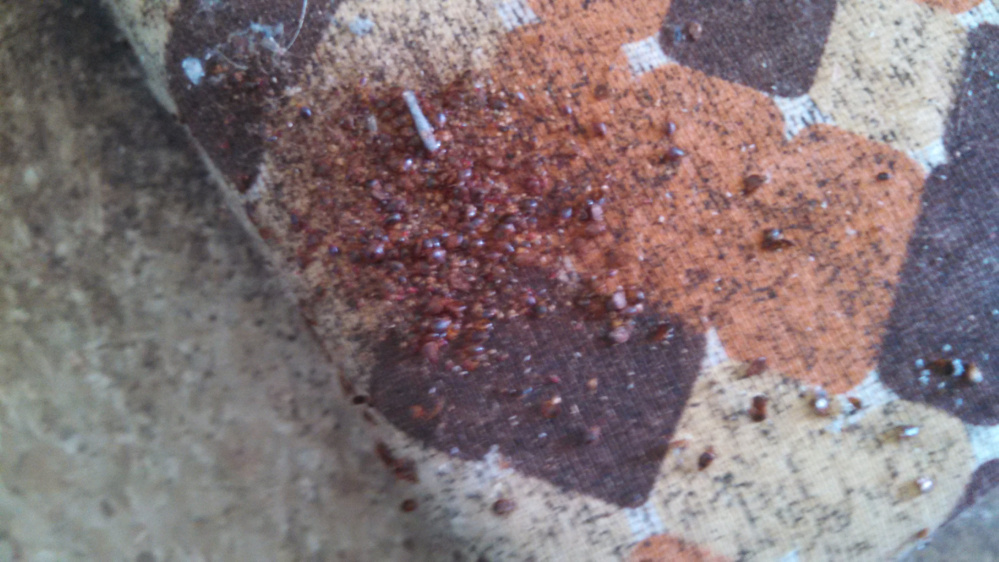AUGUSTA — A revised, potentially permanent, bedbug ordinance would give the city the ability to take action when rental properties become so infested with the persistent pests they could spread to neighboring properties, city officials said Thursday.
City councilors discussed the revised bedbug ordinance, which, unlike a similar emergency ordinance passed previously, would apply to all rental buildings in the city, not just multi-units, and would allow tenants who don’t cooperate with efforts to get rid of bedbugs to be held responsible for the cost of ongoing treatment of an infestation.
Councilors expressed support for the ordinance Thursday, and the proposal is expected to go to them for a first reading — of two required readings — at their next business meeting.
Changes were made to the bedbug ordinance first adopted as an emergency measure May 5 after a bedbug infestation was discovered at two Water Street boarding homes. City officials said they couldn’t do much about it because existing state and city rules didn’t enable the city to require landlords to take steps to get rid of the blood-sucking bugs.
“There is no state enforcement mechanism” to require landlords to take action against a bedbug infestation, said Matt Nazar, city development director. “This provides the municipality the opportunity to deal with problems that come to our attention, that aren’t being properly addressed.”
Nazar said he anticipates the city will apply the ordinance only rarely. He said if a tenant reports a bedbug problem to a landlord, and the landlord brings in pest control experts to treat the building to get rid of them, the city wouldn’t get involved.
The proposed new permanent bedbug ordinance was modified after city officials met with a group of stakeholders, including landlords, property managers, tenant advocates, pest control workers and state health officials to discuss it.
Multiple changes to the ordinance were made after the meetings, including that its rules would apply to all rental buildings in the city — unlike the first version of the ordinance, in which the rules applied only to multi-unit buildings.
The ordinance also includes new language that states tenants can be held responsible for treatment costs if they don’t cooperate with efforts by landlords and pest control agents to get rid of bedbugs. That includes not following instructions for cleaning and other preparations, or not allowing pest control workers access to treat their unit for bedbugs.
At-Large Councilor Cecil Munson asked what happens when a tenant doesn’t comply with reasonable measures to help get rid of bedbugs in a rental building, but doesn’t have any money to help cover the costs if they are deemed responsible for treatment costs.
Nazar said the landlord probably would have to take the tenant to court to recover the costs.
City Manager William Bridgeo noted the ordinance states tenants may be held responsible if they don’t cooperate with bedbug treatment efforts, not that they would be held responsible. He said in situations in which the tenant doesn’t have the capacity to pay, they wouldn’t necessarily be held responsible.
The ordinance specifies that tenants should notify their landlords if they know or suspect there is an infestation of bedbugs in their rental unit, and they shall not try to treat the infestation themselves.
Bridgeo said Tuesday all those changes were recommendations of the stakeholders group.
Parker Adams, of Pine State Pest Solutions, said at one of the stakeholder meetings that tenants trying to get rid of bedbugs themselves, using over-the-counter sprays or repellents, can make the problem worse by spreading the bugs throughout an apartment building.
No members of the public spoke about the proposed ordinance Thursday.
Bridgeo said landlords on the stakeholders group seemed willing to take some responsibility for addressing bedbug issues as they’d be required to under the ordinance, as long as the city ordinance is fair and balanced.
The ordinance gives landlords responsibility for having a pest control agent treat bedbug infestations. Landlords would be required to submit a plan, after consulting with a pest management professional, to treat the dwelling unit, the people living there and their personal belongings, and, if necessary, provide a bug-free place for tenants to live while their apartments are being treated. If the city deems the planned abatement measures insufficient, the city may require additional action. Landlords also would be responsible for all costs of treating tenants and their belongings for bedbugs.
If a landlord fails to comply with the ordinance’s requirements to deal with bedbugs, the city could enter the building, remove the bedbug infestation and recover the costs of doing so by assessing a special tax on the property, to be included in the owner’s next property tax bill, or place a lien on the property.
Bedbugs shed their exoskeletons as they grow, leaving the empty exoskeletons behind.
The bugs are brown, flat and about one-quarter-inch long with a soft, rounded look. After a blood meal, they are dark red and larger.
They feed on human blood but are not believed to carry disease.
Keith Edwards — 621-5647
Twitter: @kedwardskj
Send questions/comments to the editors.




Success. Please wait for the page to reload. If the page does not reload within 5 seconds, please refresh the page.
Enter your email and password to access comments.
Hi, to comment on stories you must . This profile is in addition to your subscription and website login.
Already have a commenting profile? .
Invalid username/password.
Please check your email to confirm and complete your registration.
Only subscribers are eligible to post comments. Please subscribe or login first for digital access. Here’s why.
Use the form below to reset your password. When you've submitted your account email, we will send an email with a reset code.